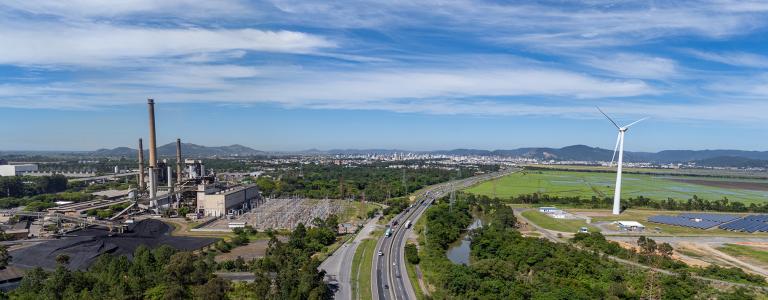Aligning Investment and Climate Goals: Where does the Energy Charter Treaty modernization stand?
This webinar, hosted in partnership with the Centre for International Environmental Law and ClientEarth, discussed the progress achieved so far in the Energy Charter Treaty modernization process and the implications for climate change and clean energy transition goals.
The Centre for International Environmental Law (CIEL), ClientEarth, and the International Institute for Sustainable Development (IISD) hosted this webinar to discuss the Energy Charter Treaty modernization process and assess the progress achieved so far.
The Energy Charter Treaty (ECT) has faced strong criticism in recent years. Initially designed in the 1990s to enable multilateral cooperation in the energy sector, it is the investment treaty that has generated the highest number of investor–state arbitrations—leading to record-breaking damages awards that have cost governments millions of dollars. The ECT contains outdated investment protection standards that have been interpreted in a far-reaching manner and have therefore allowed foreign investors to challenge a wide range of public policy measures.
Most recently, foreign investors have used the ECT to directly challenge the implementation of climate change policies, confirming previous fears that the fossil fuel industry might rely on the treaty to prevent governments from taking ambitious climate action or to seek compensation for their stranded assets.
Amid widespread recognition that the ECT is outdated and constitutes an obstacle to the transition to a low-carbon economy, the treaties' contracting parties started negotiations to “modernize” the treaty. Since this “modernization" process started in July 2020, the ECT Modernization Group has held 11 rounds of negotiations, with two more rounds planned for April 19–22 and May 17–20, 2022. The contracting parties aim to conclude the negotiations and reach an agreement in principle in June 2022 at the ad hoc Energy Charter Conference.
This webinar discussed the progress achieved so far by the European Union (EU) to meet the objectives set in its negotiation mandate:
- To bring the ECT provisions on investment protection in line with the modern standards of recently concluded agreements by the EU and its member states.
- To reflect climate change and clean energy transition goals and contribute to the achievement of the objectives of the Paris Agreement.
The webinar also reflected on issues of the ECT’s compatibility with EU law, with regard to both the intra-EU situation (following the landmark rulings Achmea and Komstroy by the EU’s Court of Justice) and in relation to third countries (applying the test set out in CJEU Opinion1/17).
Speakers
Moderators
- Nathalie Bernasconi-Osterwalder, Executive Director, IISD Europe; Senior Director, Economic Law & Policy, IISD
- Anaïs Berthier, Senior Lawyer and Head of EU Affairs, ClientEarth
Keynote speaker
- George Kahale III, Leading International Arbitration Lawyer, Chairman and Partner, Curtis, Mallet-Prevost, Colt and Mosle LLP
Panelists
- Laurens Ankersmit, Assistant Professor of European Law, University of Amsterdam
- Lucía Bárcena, Project Officer, Transnational Institute
- Helionor De Anzizu, Staff Attorney, Environmental Health Program, CIEL
- Martin Dietrich Brauch, Senior Legal and Economics Researcher, CCSI
- Christina Eckes, Professor of European Law, University of Amsterdam
- Jan Gerrit Westerhof, Lead Negotiator for the ECT, DG Trade, European Commission
- Nicolaj Kuplewatzky, Référendaire, Court of Justice of the European Union
- Lukas Schaugg, International Law Analyst, IISD

Upcoming events
2024 Investment Policy Forum
The 16th edition of the International Institute for Sustainable Development's (IISD) Investment Policy Forum will be held in Manila, the Philippines, in October 2024.
WTO agriculture negotiations on domestic support: making new rules work for LDCs and other vulnerable economies
This webinar will bring research insights for WTO delegates, advancing domestic support negotiations pre-MC14 and aiding vulnerable economies.
Workshop for Parliamentarians on the Implementation of the ASEAN Guidelines on Promoting Responsible Investment in Food, Agriculture and Forestry Sectors
This workshop aims to engage parliamentarians, enhance their capacity, and share expertise to complement the ASEAN RAI.
